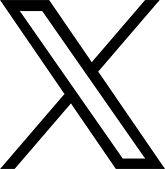Mineralogy and microstructure of roofing slate: thermo-optical behaviour and fissility
DOI:
https://doi.org/10.3989/mc.1998.v48.i251.470Abstract
The mineralogy and microstructure, which affect the slaty cleavage, are linked with the strong preferred orientation of phyllosilicates and this enables the rock to be split into large, thin, flat sheets. Roofing slate samples with different commercial fissilities have been analyzed by radioluminescence (RL), thermoluminescence (3DTL), by X-ray diffraction (XRD), by scanning electron microscopy (SEM) using the back-scattered mode (BSEI) and by electron microprobe (EMP). They are made up of white micas, chlorite, quartz, detrital feldspars, ilmenite, pyrite, rutile apatite and tourmaline. Texturally, all consist of silt-sized clasts of detrital quartz, feldspars, chlorite-mica stacks, muscovite and ilmenite in a recrystalline, lepidoblastic matrix of white micas and chlorite with quartz lenses, all showing a very strong preferred orientation. The luminescence emission centers are a low broad blue band around the 400 nm spectra positions linked with alkali losses and formation of [AlO4]º defects; a peak at 473 nm interpreted as a the first thermal step (150-300ºC) of a non-isothermal dehydroxylation of the slate phyllosilicates; and a 568 nm peak which agrees with Mn2+ point defects in aluminosilicate lattices. The studies on the slaty cleavage could be significant because Spain is the largest producer of roofing slate tiles in the world (87% of world production).
Downloads
Downloads
Published
How to Cite
Issue
Section
License
Copyright (c) 1998 Consejo Superior de Investigaciones Científicas (CSIC)

This work is licensed under a Creative Commons Attribution 4.0 International License.
© CSIC. Manuscripts published in both the print and online versions of this journal are the property of the Consejo Superior de Investigaciones Científicas, and quoting this source is a requirement for any partial or full reproduction.
All contents of this electronic edition, except where otherwise noted, are distributed under a Creative Commons Attribution 4.0 International (CC BY 4.0) licence. You may read here the basic information and the legal text of the licence. The indication of the CC BY 4.0 licence must be expressly stated in this way when necessary.
Self-archiving in repositories, personal webpages or similar, of any version other than the final version of the work produced by the publisher, is not allowed.















